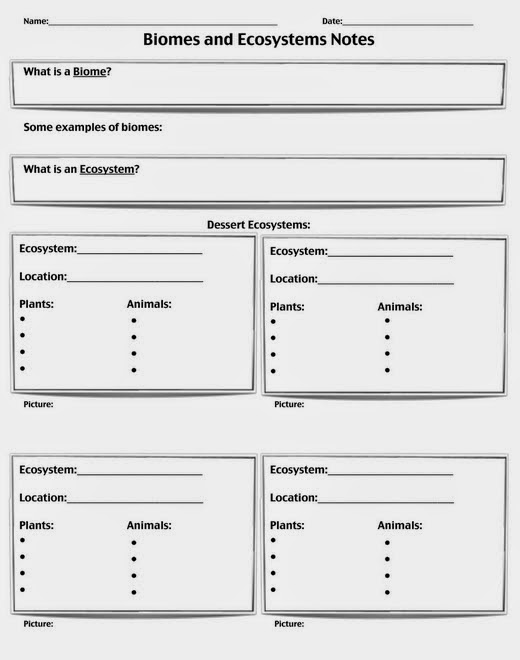I had them fill out a graphic organizer for this lesson. The preview is below, and you can download it at the bottom of this page.
There were 4 ecosystems of the desert biome, just to stress the point.
- Chihuahuan Desert (Mexico/Texas/New Mexico)
- Saharan Desert (Africa)
- Great Victoria Desert (Australia)
- Antarctic Desert (Antarctica)
Some of the pictures shown in them were specifically chosen to stress the point that a biome has similar abiotic and biotic features. For example, the coyote (chihuahuan) and the jackal (Saharan) were very similar. The Horned Lizard (chichuahuan) and Thorny Devil (Great Victoria) are very similar. Also, Antarctic Hair Grass and the Lovegrass (Sahara) are very similar.
The abiotic similarities are definitely the limited precipitation. The kids will protest and say there is lots of snow in Antarctica. Then you tell them, yes, but it is still definitely a desert. Can anyone make a hypothesis of why there is lots of snow there?
Just to drive the point home, I also added two grassland ecosystems. Both are definitely grasslands. Both are definitely different ecosystems.
- North American Plains
- African Savanna
Objective:
Biomes are large areas of earth. Ecosystems are all living and nonliving things in one place.
This lesson did a great job at helping kids really SEE the difference between Biomes and Ecosystems.



No comments:
Post a Comment